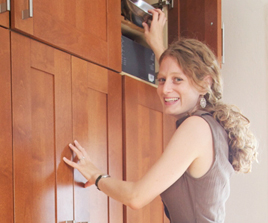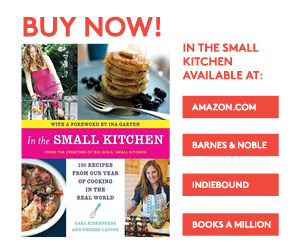The Deal with Meal Replacement Snacks
Everybody snacks. We’re at 94% of American adult snackers this year, with half of the population munching more than two times a day. Some snack because they’re starving, others because they adore cheesy bunnies or salty pistachios or blueberry yogurt or ants on a log, and still others because it’s become a healthy part of their diet plan. Though often functional, snacks have grown to have an emotional hold on us. We love them.
I’ve gotten so curious why.
There are recipes for snacks on this blog - Fried Cheerios, Granola Nuts, Lemon-Herb Popcorn. Mostly, though, there are meals. That’s because I’m a fan of breakfast, lunch, and dinner. I almost never skip a meal. Perhaps as a result of the delight I take in meal eating, I don’t snack too often, outside of days when I go for long bike rides or when deadlines force me to hole up in the library with a water bottle and some GORP.
In the last few years, I’ve started to feel alone in this, an alien meal lover in a world of snackers. So, in an effort to pinpoint the sources of our snackophilia, I’ve been doing research about the history and culture of eating between meals.
There are a lot of reasons that people snack. One is because they’re too busy for meals. Whereas I count down the minutes to lunch, some people see the midday break for ingestion as a distraction. And it sort of is. Lunch as we know it derived from the habits of industrial revolution workers, who didn’t have much control of their own schedules. Factory owners granted them a certain hour for eating and getting fresh air. Likewise, for kids at school, the pause of eating was supposed to replenish both body and mind. But if you’re swamped or running between meetings or classes, that pause starts to seem superfluous, or even annoying.
The thing is, until recently, snacking meant subsisting on junk. So if you didn’t make time for lunch, you’d end up eating chips or pretzels or candy, whose empty calories eventually make most people over the age of 14 feel slow and off-kilter. It’s one thing to enjoy a bag of chips when you want some chips, but it’s another to wish fried potato slices into lunch.
In other words, I’m not sure that most of us approach our snacks with as much cleverness and insight as our meals. So I wanted to think seriously about an eating occasion that’s often overlooked as a matter for serious consideration, hooking practical tips and delicious recipes into bigger ideas about why and when people snack.
One of those occasions is the meal-replacement snack: the bite you eat when you don’t have time to sit down for a meal-but you need nourishment all the same. Julie Morris, the author of several books on “superfoods” and the chef at Navitas Naturals, a superfoods company that sells pre-made snacks as well as ingredients like coconut chips and goldenberries, helped me see how dedicated snackers could optimize what they eat instead of breakfast, lunch, or dinner.
“I’m a huge snacker myself and usually snack all day,” she told me. “A lot of the time I’m out on the road, and that’s where these come in and save the day. My favorite recipes are in energy bars and bites. I never get too hungry, and I never get too full. My cravings are always answered and I overall feel really good.”
Morris talks to a ton of people as she tours the country, cooking and promoting her books. She’s found that she’s hardly alone.
“A lot of us are looking to achieve a healthier diet, and we’re adding more and more healthy attributes to our day: eating salads, drinking smoothies. These are easy to put into practice. A lot of people get caught up on snacks. They’re the often forgotten part of the day. You’re starving because lunch is long gone and dinner’s not for a few hours and you need a fix. When hunger strikes, that’s when cravings come into play.”
While many of us have a sense of what goes into a good (or at least a passable) meal - a sandwich and carrot sticks, a chicken breast with string beans and baked sweet potato fries, a pizza with broccoli florets baked on - we have yet to settle on what makes an ideal snack. When I choose a meal, my ultimate goal is satiety: I want to know that after I eat, I’ll, well, feel like I ate. I may choose certain foods that wouldn’t satisfy you, but if a slice of pizza or small bowl of lentils feels like lunch, then it is lunch in my world. I won’t generalize from my experience, but I would venture to say that many snacks, even those deemed healthful, won’t point you to satiety. They’re just not real sustenance. And that’s what Morris wants to help solve.




